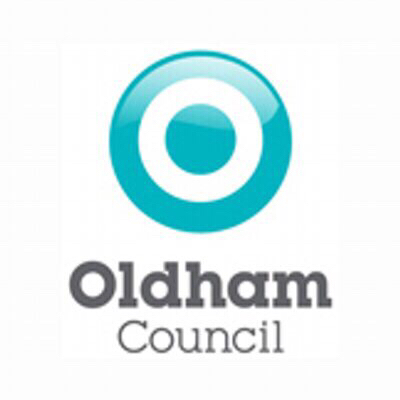Title Page
-
Location / Department being audited:
-
Date of Audit:
-
Auditee:
-
Auditor:
Section 1 - Opening Meeting
Introductions and format of the audit
-
Introductions:
H&S Team
Site Team -
The purpose of this audit is to ensure that the service / department is meeting its statutory requirements with regards to Health & Safety
-
Who has got overall responsibility for Health & Safety at the premises?
General Information
-
Address of Site / Premises
-
Name of Service Manger?
-
Total number of staff working in service area?
-
Age of the premises?
General Notes
Section 2 - Policy and Proccedures
Section 1 - Safety Policy
-
1.1 - Is there a copy of the current version of the Health & Safety Policy available in the area of responsibility?
-
1.2 - Are all employees aware of the written H&S policy?
-
1.3 - Are employees aware of their H&S duties and responsibilities?
-
1.4 - Is there a clear, written allocation of the health and safety responsibilities of all line managers and supervisors in your area of responsibility?
-
1.5 - Are employees given specific health & safety information? e.g. employee handbook
-
1.6 - Is health & safety an agenda item at team meetings?
-
1.7 - Is all relevant H&S information displayed?
-
1.8 - Have all employees got access to relevant safety documents and guidance?
-
1.9 - Is there a Health & Safety Law poster displayed in employee areas?
-
Other Observations
Section 2 - Risk Assessments
-
OVERALL AIM: Risk Assessments have been completed by a competent person and readily available to all. They are reviewed when required.
EVIDENCE: Discussions with manager, employees, training records, documentation -
2.1 - Are all hazards/risks identified?
-
2.2 - Are written risk assessments (generic/task specific) in place?
-
2.3- Is there evidence of management/employee (key members of staff) involvement?
-
2.4 - Evidence of risk assessment outcomes? i.e. training/method statements/health surveillance/PPE
-
2.5 - Are control measures implemented?
-
2.6 - Are recommendations for improvement identified and followed up?
-
2.7 - Are the generic risk assessments communicated to all staff? If so, how?
-
2.8 - Is there evidence of training for competency to carry out risk assessments?
-
2.9 - Are risk assessments approved by an appropriate person?
-
2.10 - Are the assessments reviewed periodically, following accidents and following changes of work practices? (if so, by whom?)
-
2.12- Does the Service Manager monitor risk assessments produced for specific areas /risks?
-
Other Observations
Section 3 - Accident and Incident Reporting
-
OVERALL AIM: The service has adequate procedures for the reporting, investigation and evaluation of accidents, incidents and dangerous occurrences.
EVIDENCE: Incident report forms, discussions with managers/employees/contractors, employee handbook
REFERENCE: Accident and reporting procedures -
3.1 - Are all relevant accidents/incidents reported to the health and safety team to enable HSE notification within specified time scales?
-
3.2 - Are all employees aware of their responsibilities regarding accident/incident reporting?
-
3.3 - Are all accidents/incidents evaluated at least annually, patterns & trends identified and preventative action taken?
-
3.4 - Do investigations consider compliance with legal standings, failure in performance e.g. following protocol, RA and method statement and is corrective action taken where required?
-
Other Observations
Section 4 - Emergency Arrangements
-
OVERALL AIM: Emergency Arrangements are in place and communicated to relevant personnel.
EVIDENCE: Risk Assessment, training records, fire notices, contractor information -
4.1 - Does the service have the arrangements in place to deal with all serious and imminent danger?
-
4.2 - Are key personnel aware of their responsibility in the event of an emergency?
-
4.3 - Have fire wardens been appointed and trained?
-
4.4 - Are other personnel aware of what to do in the event of an emergency?
-
4.5 - Are PEEP's in place for any staff that may required them?
-
4.6 - Are visitors, contractors, students and temporary employees made aware of evacuation procedures? If so, how?
-
4.7 - Are there written evacuation procedures posted in appropriate locations and are means of escape clearly signed?
-
4.8 - Is appropriate equipment available to deal with emergencies and are key personnel trained in its use? E.g evacuation chair
-
4.9 - If the workplace is shared, are emergency arrangements communicated and co-coordinated with neighbours?
-
Other Observations
Section 5 - First Aid
-
5.1 - Are there adequate numbers of trained personnel to render first aid readily available?
-
5.2 - Are there adequate numbers of nominated persons to maintain first aid boxes and records?
-
5.3 - First aid supplies are readily available and well stocked?
-
5.4 - Are there adequate facilities available for the disposal of sharps?
-
Other Observations
Section 6 - Medication Procedure
-
EVIDENCE: Discussion with staff, risk assessments specific to medication, training records
-
6.1 - Is there a medication policy in place?
-
6.2 - Are an appropriate amount of staff trained in administering medication?
-
6.3 - Is medication stored in a locked medication cabinet or separate lockable fridge where necessary?
-
6.4 - Do parents complete the required paperwork?
-
6.5 - Is paperwork completed on receiving and administering medication?
-
6.6 - Are individual health care plans in place (where required)?
-
6.7 - Are procedures in place for controlling Allergens within service?
-
Other Observations
Section 7 - Security and Safeguarding
-
7.1 - Is there clear signage directing visitors to reception/other services on site?
-
7.2 - Is there a signing in/out procedure or access control system in use?
-
7.3 - Are access points locked / restricted when the premises is not in use?
-
7.4 - Is there a clearly defined route between the site entrance(s) and reception, with access to persons avoided where practicable?
-
Other Observations
Section 8 - Safety Representation/Inspections
-
8.4 - Is H&S an agenda item at meetings?
-
8.5 - Are safety inspections carried out by a competent person and evidenced?
-
8.6 - Is remedial action carried out?
-
Other Observations
Section 9 - Control of Contractors (Major Works / Projects)
-
OVERALL AIM: Control of Contractors information is distributed to relevant people.
EVIDENCE: Control of Contractors procedures -
9.1 - Is a competent person involved in preparing specifications for the work or agreeing that any proposed work is acceptable?
-
9.2 - Are all contractors vetted, prior to commencement of works?
-
9.3 - Have job specific method statements and/or risk assessments been obtained from the contractor and checked by a competent person? And been agreed by the college?
-
9.4 - Are meetings held directly with the contractor to discuss the intended work and how it will effect the normal building use?
-
9.5 - Is the contractor monitored whilst undertaking the work? if so, how?
-
9.6 - Is a Permit to Work system in place for controlling high risk activities?
-
Other Observations
Section 10 - Stress & Wellbeing
-
10.1 - Is the stress policy brought to the attention of the staff, and do they know what process to take if they felt they were suffering from work related stress?
-
10.2 - Would action be taken if someone complained of stress at work?
-
10.3 - Are managers aware of the procedure to follow regarding stress assessments for work related stress?
-
10.4 - Are all new employees given a clear outline of job functions and responsibilities?
-
10.5 - Is medical surveillance in place for relevant staff?
-
Other Observations
Section 11 - Manual Handling Operations
-
OVERALL AIM: The Service has adequate procedures in place to ensure that all manual handling and moving & assisting operations are avoided or the risks minimised to reduce workplace injuries.
EVIDENCE: Look at work processes and procedures, inspect manual handling assessments, discussions with employees, training records, maintenance records -
11.0 - Is there an awareness of Manual Handling operations within the service and who carries them out
-
11.1 - Are all manual handling and moving & assisting operations assessed taking into account the load, the nature of the task, the working environment and the individuals' capabilities?
-
11.2 - Where a significant risk is identified, has a specific manual handling assessment been carried out and formally recorded?
-
11.3 - Where hazards exist are the control measures identified in the assessments implemented and monitored by supervisors/managers?
-
11.4 - Have employees received appropriate training to carry out those manual handling tasks which cannot be eliminated?
-
11.5 - Where mechanical aids are provided to assist employees with lifting and handling - are they easily accessible, suitably maintained and serviced where necessary and employees suitably trained in their use?
-
Other Observations
Section 12 - Lone Working
-
OVERALL AIM: Suitable measures are in place to identify lone workers and ensure that the risks associated with lone working are fully understood and managed to their lowest level practicable.
EVIDENCE: Specific risk assessments, evidence of awareness and training, background information on individual service users, mobile phones or other means of summoning assistance provided -
12.1- Have individuals or groups of employees been identified as lone workers?
-
12.2 - Have specific risk assessments been undertaken identifying the risks associated with lone working? Are they suitable and sufficient?
-
12.3 - Are there protocols in place where the lone worker records their whereabouts and is required to call in at the end of their lone working period?
-
12.4 - Is someone within the workplace identified as having responsibility for taking appropriate action if an individual does not return or call in?
-
12.5 - Are all employees aware of the lone working procedures in place and their responsibility for working within them?
-
Other Observations
Section 13 - Work at Height
-
OVERALL AIM: The service has adequate arrangements to avoid or reduce the risks of people and materials falling from height or through fragile surfaces
EVIDENCE: Discussions with premises manager, employees, inspection of the workplace, inspection of the workplace and equipment, inspection of records -
13.1 - Is there awareness of where work at height takes place on the premises and who carries it out?
-
13.2 - Is there evidence that work at height risks specific to the premises have been assessed including existing places of work and fragile surfaces?
-
13.3 - Where necessary to work at height, is the work properly planned and supervised by a competent person? Have people who are required to work at height undergone appropriate training?
-
13.4 - Are management checks carried out to ensure that people working at height are competent?
-
13.5 - Is there evidence that work equipment has been selected appropriate to the tasks and areas of work?
-
Other Observations
Section 14 - New and Expectant Mothers
-
OVERALL AIM: Suitable measures are in place to ensure the health, safety and welfare of new and expectant mothers
EVIDENCE: Specific risk assessments, evidence of training and awareness of risks, incident report forms -
14.1 - Are specific risk assessments carried out taking into consideration vulnerable groups including pregnant women and young persons?
-
14.2 - Are managers aware of the need to modify tasks or consider alternative working arrangements depending on the findings of risk assessments?
-
14.3 - Are there welfare facilities available for employees who are pregnant or breast feeding?
-
14.4 - Is there evidence that managers discuss the outcome of the risk assessment with the individual employee?
-
Other Observations
Section 16 - Display Screen Equipment (DSE)
-
OVERALL AIM: The use of Display Screen Equipment (DSE) is effectively managed in college and any health risks are identified and adequately controlled.
EVIDENCE: Discussions with employees, inspection of the workplace and equipment, inspection of DSE Assessments -
16.1 - Has a DSE Self-Assessment been carried out for relevant employees either manually or by using an on-line system and has any advice or equipment been provided to the employee?
-
16.2 - Have relevant employees received DSE awareness training/instruction?
-
16.3 - Are procedures in place for employees to report any pain or discomfort that may be attributed to using the DSE to their supervisors and then be referred for further medical help/intervention?
-
16.4 - Are all DSE assessments carried out by a competent person?
-
Other Observations
Section 17 - Driving at Work
-
17.1 Do staff within the department drive for work?
-
17.2 Do staff have acess to the the driving at work policy?
-
10.5.7 Do you require the employee to annually submit their license, MOT and insurance and a be copied and held on file ?
-
10.5.8 Records kept on file ?
-
Other Observations
Section 20 - General Training
-
20.1 - Have all staff received Site Specific Induction training?
-
20.2 - Have all staff received H&S Awareness training?
-
20.3 - Have all staff received Manual Handling training?
-
20.4 - Have all staff received Working at Height training?
-
20.5 - Have all staff received Basic Fire Safety training?
-
20.6 - Have all relevant staff received COSHH training?
-
20.8 - Have all relevant staff received Risk Assessment training?
-
20.9 - Is some form of Training Matrix used for recording all staff training?
Section 3 - Site / Facilities Management
Section 21 - Control of Legionellosis
-
EVIDENCE: Health & Safety Guidance - L8 The Prevention and Control of Legionellosis
-
21.1 - Is there guidance based around L8 for control of legionella available for reference?
-
21.2 - Is someone identified as competent for your premises in relation to Legionella?
-
21.3 - Is the premises assessed to identify the level and source of risk from legionella?
-
21.4 - If there is a risk, has a scheme for preventing or controlling the risk been developed for the premises?
-
21.5 - Are there management plans to implement and manage control measures?
-
21.6 - Are all records in relation to legionella kept?
-
21.7 - Is the competent person for legionella involved in any planned work on water or air conditioning systems?
-
21.8 - Is property management aware of the intended work?
-
21.9 - Are contractors involved in any legionella work monitored? Is this recorded?
-
Other Observations
Section 22 - Asbestos
-
OVERALL AIM: The service has procedures in place to ensure that asbestos containing materials in the building do not pose a threat to health, the condition is appropriately monitored and where work is planned involving disturbance the Asbestos Duty Holder and property management are fully aware.
EVIDENCE: Site asbestos file, induction records, team meeting minutes, discussions with duty holder, discussions with employees.
REFERENCE: Asbestos policies and procedures -
22 - Is there any asbestos on site?
-
22.1- Has an Asbestos Duty Holder been appointed to manage asbestos containing materials at the workplace?
-
22.2 - Has the Asbestos Duty Holder received appropriate training to allow them to carry out their responsibilities?
-
22.3 - Does the premsies have an up to date Asbestos Register?
-
22.4 - Does the Duty Holder regularly inspect the condition of any identified asbestos in the asbestos building file? Are these checks recorded in the register?
-
22.5 - Do all building contractors sign in and check the asbestos survey report prior to starting work?
-
22.6 - Are the procedures known and understood if asbestos is disturbed in the building?
-
22.7 - Are employees that work in the building made aware of the presence and position of asbestos in the building if they are likely to disturb it during normal work?
-
22.8 - Are warning labels/stickers provided where appropriate?
-
Other Observations
Section 23 - Control of Substances Hazardous to Health (COSHH)
-
OVERALL AIM: The service has adequate procedures in place to avoid or reduce to the lowest level possible, the exposure of all persons to substances, which may be hazardous to health.
EVIDENCE: COSHH Assessments, training records, discussions with employees/supervisors, inspection of workplace and PPE records, maintenance records -
23.1 - Have COSHH assessments been carried out for all products, substances and processes and the findings been formally disseminated to employees?
-
23.2 - Where hazards exist, are the control measures identified in the COSHH assessments implemented and monitored by supervisors/managers?
-
23.3 - Has adequate information, instruction and training been provided for employees using substances that may be hazardous to health?
-
23.4 - Is there a system in place to request manufacturers hazard data sheets (MSDS's) for new products introduced in school?
-
23.5 - Are hazardous substances stored safely and suitably labelled?
-
23.6 - Where necessary are procedures in place to monitor exposure and provide health surveillance?
-
23.7 - Are there adequate welfare and emergency facilities where appropriate?
-
23.8 - Are the products and COSHH assessments reviewed on a regular basis?
-
23.9 - Are all Environmental incidents reported?
-
23.10 - Are adequate clean up procedures in place to deal with a spillage?
-
Other Observations
Section 24 - Electrical Safety
-
REFERENCE: Health & Safety - Electricty at Work Regulations
-
24.1 - Electrical panels are clearly marked and unobstructed, restricted access?
-
24.2 - Cable management acceptable? (no split/taped cords)
-
24.3 - Any loose or damaged conduit or trunking?
-
24.4 - Fixed electrical system checked by competent person? Examine records?
-
24.5 - Portable electrical equipment maintained - visual checks by user, formal inspection?
-
24.6 - Any unauthorised private equipment being used?
-
24.7 - Do any power sockets appear to be overloaded?
-
Other Observations
Section 25 - Fire Protection
-
OVERALL AIM: Fire equipment is suitable and sufficient and adequately maintained and inspected
EVIDENCE: Discussion with managers & staff, risk assessments, training records, inspection of work equipment/audits/inspection records -
25.1 - Has a fire Risk Assessment been carried out for the premises and if so has an action plan been developed to implement the recommendations?
-
25.2 - All fire alarms and smoke detectors are in working condition?
-
25.3 - All exits are clearly marked?
-
25.4 - Fire extinguishers are properly mounted?
-
25.5 - Extinguishers have inspection sticker attached?
-
25.6 - Combustible materials are kept away from heat sources?
-
25.7 - Fire doors and exits are free of obstructions?
-
25.8 - Weekly fire alarm tests are carried out and recorded?
-
25.9 - Are regular fire evacuation drills carried out (at least once a term)?
-
25.10 - Vision panels are unobstructed and in good condition?
-
25.11 - Where applicable, has the sprinkler system been maintained, inspected and tested?
-
25.12 - Do all fire doors close and fit into rebate as appropriate?
-
25.13 - Are external storage / waste bins secured and located a suitable distance away from the buildings?
-
25.14 - Is emergency lighting tested and recorded?
-
Other Observations
Section 26 - Gas & Boiler House Safety
-
OVERALL AIM: The premises has adequate procedures for the effective control and management of gas safety.
REFERENCE: Gas Safety Register, HSE.gov.uk -
26.1 - Are all gas appliances installed, fitted and maintained by competent persons?
-
26.2- Are all appliances subjected to an annual gas safety test?
-
26.3 - Is a gas shut off valve installed and are staff aware of its location?
-
26.4 - Are only trained persons involved in relighting gas appliances and pilot lights?
-
26.5 - Are boiler houses free of combustible materials?
-
Other Observations
Section 27 - Work Equipment
-
OVERALL AIM: Work equipment is suitable and is adequately maintained and inspected. All equipment is suitably constructed and guarded and employees are competent.
EVIDENCE: Discussion with managers/purchasing officers, risk assessments specific to work equipment, discussions with employees, training records, inspection of work equipment departmental plans/audits/inspection records -
27.1 - Is work equipment assessed prior to purchase for its suitability and compliance with the Provision and Use of Work Equipment Regulations (PUWER) ?
-
27.2 - Is work equipment installed, located and used in such a way as to reduce the risks to users and others?
-
27.3 - Is work equipment maintained and inspected either as per the manufacturer's instructions or where the risk assessment dictates. Are adequate records kept?
-
27.4 - Where work equipment involves specific risks to health & safety is use limited to competent persons?
-
27.5 - Have employees received information, instruction & training in the use of work equipment relating to the hazards and risks and are they deemed competent to operate the equipment?
-
27.6 - Have hazards relating to particular work equipment been identified and adequately controlled?
-
27.7 - Has a workplace audit been undertaken to determine compliance with the requirements of PUWER and where the equipment fails to comply with PUWER, is a replacement or upgrade program in place?
-
27.8 - Is there a defective equipment reporting and recording procedure?
-
27.9 - Have relevant staff received training in Abrasive Wheels?
-
27.10 - Have suitable Noise & Vibration risk assessments been carried out?
-
27.11 - Are all Local Exhaust Ventilation (LEV) systems inspected every 14 months?
-
Other Observations
Section 28 - Premises Management
-
EVIDENCE: Asbestos register, risk assessments, records of tests, contractors documentation provided, CDM documents, site visits, discussions with managers/premises managers.
-
28.1 - Are housekeeping checks carried out and recorded?
-
28.2 - Is there compliance with the Equality Act 2010 for access/egress with appropriate safety markings/signs/alarms?
-
28.3 - Are work areas adequately lit?
-
28.4 - Is there adequate ventilation (fresh air) through work areas?
-
28.5 - Is the ambient temperature between 16-24 Celsius?
-
28.6 - Are arrangements in place for reporting defects to the building and remedial action carried out?
-
28.7 - Anti-slip surfaces provided where appropriate?
-
28.8 - Is there an adequate provision of drinking water?
-
28.9 - Is there adequate number of sanitary conveniences?
-
28.10 - Are traffic routes clearly marked?
-
28.11 - Are speed restriction or one ways systems in place for traffic?
-
28.12 - Is there adequate vehicle/pedestrian separation within the premises?
-
28.13 - Are all gates protected against trapping points?
-
28.14 - Are all staircases fitted with handrails/guardrails?
-
28.15 - Is the perimeter wall/fence/railings in a good state of repair?
-
28.16 - Is the external waste area clearly identified/secure/away from the main building?
-
28.17 - Have relevant staff received training in Confined Spaces?
-
Other Observations
Section 29 - Housekeeping
-
29.1 - Is the premises and other areas clean and tidy?
-
29.2 - Corridors/halls/walkways clear of debris and obstructions?
-
29.3 - All spills cleaned up speedily?
-
29.4 - Carpets in good condition? (No holes or curled edges)
-
29.5 - Rest rooms are kept neat and clean?
-
29.6 - Floors, stairs and walkways have non-slip surfaces where appropriate?
-
29.7 - Waste bins are available and emptied regularly?
-
29.8 - Floors are free of holes, protrusions, loose boards and splinters?
-
29.9 - Oily rags and flammable refuse are correctly and quickly disposed of?
-
29.10 - Items are stored correctly and empty boxes, etc are disposed of?
-
Other Observations
Section 31 - Personal Protective Equipment (PPE)
-
OVERALL AIM: The service has procedures in place to provide suitable Personal Protective Equipment (PPE) to all employees who may be exposed to a risk to their health & safety that is not adequately controlled by other means.
EVIDENCE: Inspect risk assessments & specific PPE assessments, discussions with employees/supervisors, checks on PPE, storage & maintenance records -
31.1- Evidence of specific/task personal protective equipment assessments?
-
31.2 - Is PPE suitable for the task/job?
-
31.3 - Are employees trained in the use and limitations of PPE?
-
31.4 - Is PPE inspected regularly by a competent person?
-
31.5 - Is there a clear procedure for reporting defects?
-
31.6 - Is PPE used when required, fitted correctly, stored and maintained including adequate changing facilities?
-
Other Observations
Section 35 - Lifts & Lifting Equipment
-
OVERALL AIM: The service has adequate procedures for the effective control and management of lifts and lifting equipment including inspection and maintenance.
EVIDENCE: Inspection records, maintenance records, discussions with managers/employees/contractors
REFERENCE: HSE Guidance INDG339 'Thorough Inspection & Testing of Lifts -
35 - Are there any lifts or lifting equipment?
-
35.1 - Are all passenger lifts fitted with safety devices to prevent a person being crushed, trapped, struck or falling from the lift?
-
35.2 - Are lifts/equipment marked with it's safe working load?
-
35.3 - Is there a means of raising alarm in all lifts in event of failure, are these tested and recorded?
-
35.4 - Is there a clear procedure to be followed in event of a person becoming trapped in the lift/equipment and are people competent to follow the procedure?
-
35.5 - Are all lifts/equipment examined at statutory intervals (every 6 months for people or 12 months for loads only) by competent person, recorded in terms of inspections, maintenance and testing?
-
35.6 - Has a competent person been appointed and had suitable training to carry out thorough examination and maintenance?
-
35.7 - Are they impartial in order for them to make an objective assessment of the lift/equipment?
-
35.8 - Are all remedial measures reported to the duty holder and swift action taken as a result?
-
Other Observations
Section 9 - Closing Meeting
Summary of findings of audit
General Notes
Signatures
-
College Representatives Signature
-
Auditors Signature














